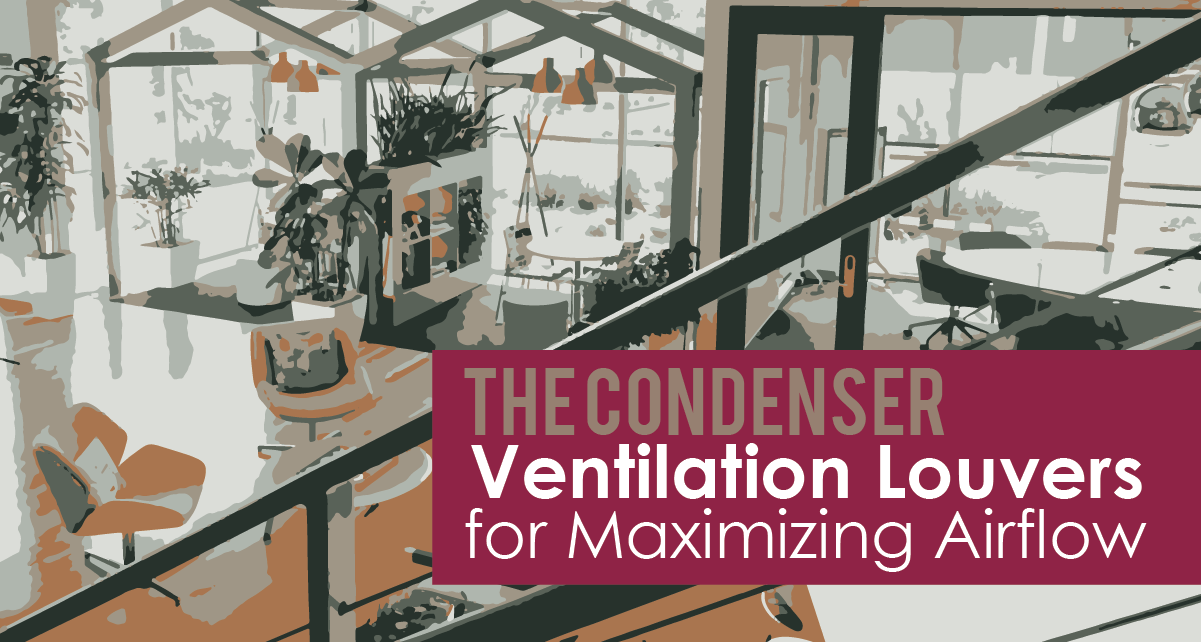Louvers often focus on protection, but air performance is also important for system efficiency. Keep air moving freely with ventilation louvers. Learn more on the Newsstand.
Protection versus Performance
Louvers are built to protect openings and interiors from weather damage. However, there are other aspects to consider. Louvers should also provide adequate ventilation. An intake louver should allow air into the system without dragging down air performance. Ventilation louvers focus on airflow.

For more on louvers, check out these articles on the MCDLG Newsstand:
- Ten Important Traits of Highly Effective Louvers
- Four Questions on Louver Location
- The Condenser - Water Infiltration and Louvers
Designing Ventilation Louvers
All louvers provide a basic layer of protection. Their angled blades will naturally deflect incoming rain. Drainable louvers equipped with channels and troughs can keep rainwater out. Blade catches provide additional protection by capturing water in the airstream before it can pass through the louver.
These features are important for protecting the interior, but they also restrict airflow. Ventilation louvers should have straight blades with no features. A smooth blade profile will provide an unobstructed path. Smooth blade profiles will also increase the louver’s free area.

Focus on free area when designing ventilation louvers. To do this, you will need to know the required dimensions of the louver. Free area changes with the louver's size, but the increase will not always be uniform. Louvers have more blades as their height increases.
Free area data will be available for each louver, accounting for multiple dimensions. Consult the free area table on the louver's submittal to determine the louver's size. If you don't see the exact size on the table, use the size that closely matches the final dimensions of your louver.
The submittal will also display a general free area for the louver, using AMCA's standard size of 48” x 48”. This data can help you quickly compare the free area of multiple louvers. Once you narrow down your search, you can consult the louver's free area table for the appropriate size.
The Key to Efficient Airflow
The goal of ventilation louvers should be minimizing pressure drop. Low pressure drop means more efficient airflow. You can achieve this by looking for louvers with straight blades and high free area. If available, check the louver for pressure drop data and look for the AMCA Certified Ratings Seal for Air Performance. AMCA seals ensure the relevant test data is reliable.

Always remember to check your project’s requirements before selecting louvers. In many cases, you can achieve efficient airflow and meet severe weather requirements with the same louver. The best way to know is reviewing the louver’s submittal.
.webp?width=650&height=329&name=MCDLG%20Blog%20-%203%20Types%20-%20Combined%20(Resize).webp)
Consider adding ventilation louvers from Arrow United Industries. We build every louver with your project in mind. Browse our catalog online or get in touch with us today. We can help you find the right louvers for your next project.
Which is more important for you: air performance or rainfall protection? Share your thoughts in the Comments section. We want to hear from you!
.webp?width=91&height=70&name=MCDLG%20Logo%20(Resize).webp)






